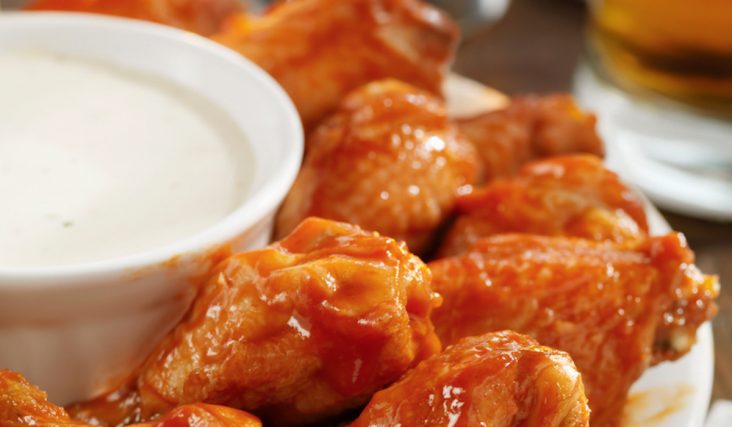Record consumption of chicken wings expected for Super Bowl
by January 27, 2021 5:13 pm 1,116 views

While Nielsen reports viewership of National Football League games were down 7% during the regular season, the National Chicken Council forecasts record consumption of chicken wings during the Feb. 7 Super Bowl match between the Kansas City Chiefs and the Tampa Bay Buccaneers.
Tom Super, spokesman for the National Chicken Council, said Americans will devour a record 1.42 billion wings while watching the Super Bowl, up 2% from last year. To put that number in context it would take Kansas City Chiefs’ coach Andy Reid more than 900 years to eat 1.42 billion wings at a rate of three wings per minute, according to the council.
“If you think about it, restaurants like wing joints and pizza places were built around takeout and delivery, so they didn’t have to change their business model that much during the pandemic. Wings travel well and hold up during delivery conditions. Plus, they align with consumer desire for comfort food during the pandemic,” Super said.
He said chicken production remained steady in 2020, and as long as people are sitting around watching TV and maybe drinking a beer, wings will remain in the game. He also credits the air fryer revolution for more families cooking their own wings than in prior years.
He said restaurant sales of wings rose 7% in 2020 from the prior year, despite an 11% decline in restaurant traffic, according to The NPD Group. Consumers also purchased nearly $3 billion of wings to cook at home from supermarkets in 2020, up 10.3% from 2019, according to IRI. Between March 15, 2020 through Jan 17, 2021 the in-store frozen wing category sales are up 37.2% from last year, IRI reports.
Stephens Inc. reports chicken wing prices are up 31.2% year-over-year and up 5% from a month ago. Processors and retailers are able to pass along higher prices as cold storage inventories were 11.7% lower in December, according to the U.S. Department of Agriculture. Processor margins are up sharply averaging 12 cents a pound in January, compared to 5 cents a pound a year ago. Stephens reports the outlook for processors remain mixed with higher grain costs, combination of supply cuts and improving foodservice demand will likely drive better fundamentals in the intermediate term.
Tyson Foods, the nation’s largest chicken company, is expected to report earnings Feb. 11 and CEO Dean Banks has already said the chicken segment requires more work to turn around the lackluster results in recent quarters. Shares of Tyson Foods (NYSE: TSN) closed Wednesday at $64.78, down $1.79. Tyson shares have traded between $42.57 and $85.06 during the past 52-weeks.
